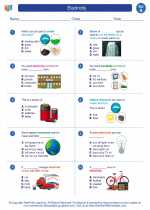Open Systems
An open system is a concept in science that refers to a system that interacts with its environment through the exchange of matter and energy. In an open system, both matter and energy can be transferred between the system and its surroundings. This means that open systems are able to take in input from the environment, process it in some way, and then produce output back into the environment.
Key Characteristics of Open Systems:
- Exchange of Matter: Open systems can exchange matter with their surroundings. This could involve taking in raw materials, processing them, and then releasing waste products back into the environment.
- Exchange of Energy: Open systems can also exchange energy with their surroundings. They may take in energy in the form of sunlight, heat, or other sources, and use it to power their processes.
- Dynamic Equilibrium: Open systems are often in a state of dynamic equilibrium, where there is a continuous flow of matter and energy in and out of the system, but the system maintains a relatively stable internal environment.
- Examples: Examples of open systems include living organisms (such as plants and animals), ecosystems, and certain chemical reactions that exchange matter and energy with their surroundings.
Study Guide:
When studying open systems, it's important to understand the following key points:
- Define what an open system is and be able to provide examples.
- Explain the concept of dynamic equilibrium and how it relates to open systems.
- Understand the various ways in which open systems exchange matter and energy with their environment.
- Be able to identify real-life examples of open systems and describe the exchanges of matter and energy that occur within them.
Understanding open systems is essential in various scientific disciplines, including biology, ecology, chemistry, and environmental science. It provides a framework for analyzing how systems interact with their surroundings and how matter and energy flow through natural and artificial processes.
Feel free to reach out if you have any further questions or need additional information!
[Open Systems] Related Worksheets and Study Guides:
.◂Science Worksheets and Study Guides First Grade. Electricity

 Worksheet/Answer key
Worksheet/Answer key
 Worksheet/Answer key
Worksheet/Answer key
 Worksheet/Answer key
Worksheet/Answer key
